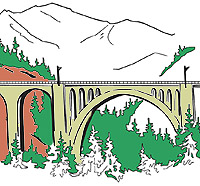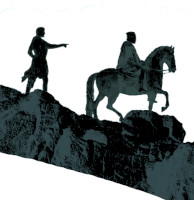Every writer on the subject of societal decline seems to invoke Rome, though with a lack of nuance. Below is a missive from one academic to another that references my knuckleheaded thoughts on the process under discussion. Thank you.
I've not read that book, and I'd put it on my list...but I'm currently just beginning to read books like "Where there are no doctors" and "How to survive on 1/4 acre", etc. Literally, my entire reading list these days looks like a Prepper's dream library. My hope is that if I lose my job in this next financial fiasco, I'll at least have the time to actually read and dig in.
Your point about collapse looking different - and happening at different rates - in different areas is spot on, and I think my theory of civilizational collapse makes it look and sound like it will take a smoother and more linear trajectory than I really think it will take. Much like a ball bouncing down variable-size/shape steps, the momentum of the ball, the angle and hardness of the step, etc, will all affect the way the ball bounces towards the next step.
Using history as a better example, the exact date of the fall of the Roman Empire greatly depended on where you were. In the City of Rome, 410 is a pretty solid date if you were among those killed in the sack of the city. If you were a noble of Rome, you might say 470 is more accurate. In the east, most Romans stopped caring about the western half of the Empire by the early 400s, and their half of the Empire did not collapse until centuries later (a millennia, if by "Empire" you mean the city of Constantinople and the immediate surrounding land), while in the countryside of the western half, to many peasants it may have seem "collapsed" by the 430s or even earlier, when local Roman or Germanic officials began operating as if there was no Rome anymore. The French Revolution, too, happened at different speeds and different depths depending on where in France you lived at the time.
I guess my main assertion is that while historians (and a few very smart contemporaries) can see the long downwards spiral many civilizations take prior to any "cliff-like" collapse, the ones living through it often can not. Why do we think we are any different? I intuit, and draw from some pretty strong evidence, that we have been on a downward slide for a decade or three already, but my sense is that things are accelerating, and accelerating at an exponential rate (reverse hockey stick!) As a historian living through the moment in time I am trying to analyze, my view is clouded by my lack of unbiased, and often limited, knowledge. However, using the past as a guide I think it's fair to say that when the downward slide of civilization begins accelerating and becoming more apparent to more and more people, we're not that far from the cliff. Given the complexity of modern civilization, and the complete dependence of the various parts of the system on one another, I believe this collapse will be rapid, chaotic, and deadly. The collapse will take decades to play out fully, however, in the sense that the reverberations will echo for a long time, and the transition from our current world to the next epoch of human history (assuming we don't fry ourselves in a nuclear fire) will likely take centuries to fully transition.
In any case, I have a close friend who writes lots of stuff for his own personal blog (jameslafond.com) where he touches on the idea that collapse is well underway in many urban areas of the United States, and we frequently discuss the nature of collapse as well as how unprepared suburban America is for it. He's pretty convinced that the collapse, in poor urban areas, is in full swing and will only get worse in the decade to come. When this collapse reaches suburban America, which is very much used to its creature comforts, the shit will really hit the fan. (His words for this are actually much more colorful!)
At this point I would expect a disclaimer to prevent mangina sensibility hemorrhaging—right on cue Doug!
Quick note about James: his ideas and writing style may offend some in their bluntness and his borderline-crass delivery, but he's a great guy who tells it straight and never takes himself too seriously. He is also more well-read and intelligent than most college professors I know. Proceed to his site at your own risk.
A Collapse Model Formula?
Doug, to use the Roman model for predictive purposes how about calculating the pace of technological change and population expansion for Rome, and then find some Russian theoretical mathematician to accelerate the Roman rate of collapse according to our rate of change and expansion. I definitely believe the decline of Rome should be charted from Trajan’s death A.D. 117. He stretched the frontier to its limits and from Hadrian on it was an attempt to hold on. For our American attempt to hold on I would look at what date fortification [fencing] of the Mexican border began. Now my White Nationalist readers are going to give me grief for equating Scottish clans with Mexican cartels.
Also, check out Jared Diamond’s book Collapse. The liberals hated that book as much as the conservatives hated Guns, Germs and Steel, because it shows low tech collapse of collective tribal societies, that are, by the current liberal academic standard, ‘culturally innocent'. He shows that you don’t need factories and oil tankers to trash an environment. The most interesting part is his integration of climate change and natural resource depletion.
In case you are not up on the professor check out him out here The Fall Of The Garden Of Ishtar.











